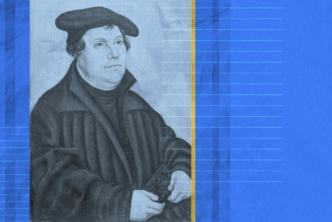Today’s guest post is by Pastor Sam Luce of Redeemer Church in Utica, New York. Sam has been a pastor for 17 years—14 of which he served as a children’s pastor. He received his BA in theology from Portland Bible College, and he’s been involved in children’s ministry for 23 years. Sam writes regularly about children’s ministry and Christian parenting at SamLuce.com.
“Bonhoeffer would often say that ‘if one couldn’t communicate the most profound ideas about God and the Bible to children, something was amiss.’”—Eric Metaxas
One of the most important and most neglected disciplines for children’s ministry work is personal study. Often when it comes to children’s ministry curriculum, the Bible story is either too complicated or too simplistic. The answer is not “buy a better curriculum.” The answer is personal bible study.
As a kids pastor or volunteer, you have to understand the Bible passage and how it relates to the broader story of redemption. This is rarely understood at a glance. In my personal study and preparation, the greatest tool I use is Logos Bible Software.
Here’s how I prepare Bible stories for our kids church—and how Logos helps me do this in a matter of minutes:
1. Read the passage multiple times
The first thing I do is identify the bible story and locate it in my Bible. I then read it through four or five times.
2. Make observations about the biblical story
I make a list of several observations that stood out to me in my reading, this includes themes, and main points, and questions I need answers to.
3. Identify how the story relates to Christ
I then ask myself how Christ is seen in this passage or what is Jesus doing and what is he revealing about himself to us.
4. Get the biblical context of the passage
Next I do a simple passage search in Logos. It gives me all the information I need to gain the context of the passage, and I can read through what other commentators have said about the story I’m studying.
5. Outline the story
I lay out what I have studied in a guide that includes background information, points to bring out in the retelling of the Bible story, how to apply the story, and lastly point them to Christ.
With a very quick search, Logos gathers all the information I need. Where Logos shines is that everything in my biblical library is searchable—the passage I’m reading, quotes from other books, sermon archives, and commentaries. You can quickly understand the historical setting of the Bible story as well as the story behind the story.
One of the unintended consequences of teaching the Bible to kids without fully understanding it ourselves is we give kids facts but leave out the beauty of redemption that weaves in and out of every story. Children who grow up knowing the Bible as fact but fail to see Christ on every page see the Bible as useful rather than beautiful. They will use the Bible until it is no longer useful.
If, however, they see it as beautiful and precious, they will run to it in the midst of life’s storms. They will treasure it above all things. The responsibility for our children to see the Bible in this way cannot come from any curriculum but from a teacher who personally finds the Bible captivating and life-giving. As teachers we need that blend of systematic study (what we can do), and revelation from God (what only he can do).
This is my challenge to all of you who use curriculum to teach kids: don’t regurgitate the words on the page. Use them as a launch pad to see Christ and to help our kids see Christ on every page and in every story.





